In doing research for the development of IAEI’s Analysis of Changes, 2017 NEC textbook, I found that one of the most interesting changes is located in Article 555 involving electric shock drowning (ESD) at marinas, boatyards and commercial and noncommercial docking facilities. ESD is a term that references in-water injuries or fatalities resulting from electrical shock. ESD often occurs when low levels of alternating current (ac) are present in the water and pass through a person’s body, causing paralysis of their muscular and skeletal systems while swimming or otherwise immersed in fresh water. When so paralyzed, the victim is unable to swim or move to safety and, as a result, the victim ultimately drowns. When caught in a situation like this, a person’s natural reaction is to swim toward the dock while research into ESD shows just the opposite and suggest the best remedy is to swim away from the dock.
Electric shock drowning has been seen principally in freshwater environments. ESD begins with an electrical fault condition on the dock or onboard a boat when a voltage source comes into contact with the body of water. The voltage radiates throughout the water in a hemispherical field. As a swimmer approaches the electric field, electric current begins to flow through the swimmer’s body. The human body has a much lower resistance than fresh water, so it acts as the better conductor of electricity. In the presence of an electric field, the human body, not the surrounding fresh water, conducts the majority of electric current. As little as 10 mA of current through the human body can cause loss of muscular control which may result in drowning. ESD can be deceptive since the victim may not be exposed to the stray voltage field upon initially entering the water. This deception leads the victim to believe that the water is safe for swimming until he or she unintentionally enters the voltage field.
Two changes to the 2017 National Electrical Code (NEC) in particular were closely associated to each other in Article 555 in association with ESD. The first one was at 555.3 for ground-fault protection (GFP), and the other one was a new requirement at 555.24 for signage at marinas, boatyards, and commercial and noncommercial docking facilities.
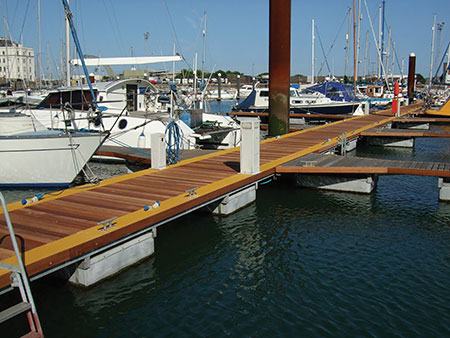
Scope and Title of Article 555
Before we take a closer look at these two changes, in particular, it should be noted that the title of Article 555 was modified from “Marinas and Boatyards” to “Marinas, Boatyards, and Commercial and Noncommercial Docking Facilities.” Revisions to the title and scope of the article (see 555.1) make Article 555 relevant once again to dwelling unit docking facilities as well as commercial docking facilities. Prior to the 2002 NEC, residential docking facilities were covered by Article 555. During the 2002 NEC revision cycle, a total rewrite of Article 555 that incorporates the physical installation rules contained in NFPA 303, Fire Protection Standard for Marinas and Boatyards, were instituted into Article 555. Included in this rewrite, a sentence was added to the scope of Article 555 which stated, “private, noncommercial docking facilities constructed or occupied for the use of the owner or residents of the associated single-family dwelling are not covered by this article” (see 2002 NEC ROP 19-135 and 2002 NEC ROC 19-71). This revision removed any residential docking facility from obligation of compliance with the requirements of Article 555. During this time, a designer, installer, or homeowner could certainly apply Article 555 rules to a particular residential docking facility installation if he or she so desired, but the Code did not mandate the requirements.
For the 2017 NEC, changes to the scope of Article 555 will swing residential boat docks back under the compliance provisions of Article 555. As previously written, the NEC rules in Article 555 would not apply to residential boat docking facilities, yet the majority of the rules in Article 555 would be necessary for implication at residential boat docks associated with single-family and multi-family dwelling occupancies. An electrical hazard does not know or care if it is occurring at a dwelling unit or non-dwelling unit docking facility, yet the hazards are the same in these associated aquatic environments. This revision will resolve this issue by providing users of the Code with the obligation to apply Article 555 requirements to all wiring, equipment, and electrical systems installed at boat docking facilities regardless of its location, be it residential, commercial, or an industrial application.

The alternative to this revision to Article 555 for inclusion of residential docking facilities would have been the creation of a whole new article for boat docking facilities associated with dwelling units. Creating a new separate article for residential docking facilities would result in unnecessary redundancy in the NEC as the rules would be repetitive as these environments present the same electrical hazards. Article 555 closely prescribes to the provisions of NFPA 303.
The scope of NFPA 303 excludes boat docking facilities for single-family dwelling and multi-family dwelling occupancies, yet the purpose of the standard appears to address fire and electrical hazards that are present in any boat docking facility associated with any occupancy. Section 1.2 of NFPA 303 states the following; “This standard is intended to provide a minimum acceptable level of safety to life and property from fire and electrical hazards at marinas and related facilities.” The same purpose and reasons for requiring this protection are not different when applied to a dwelling unit docking facility. For correlation purposes, a companion public input was submitted to NFPA 303 for inclusion of noncommercial docking facilities.
Ground-Fault Protection at Marinas and Boatyards
The ground-fault protection required for overcurrent protective devices for marinas, and now boatyards, and commercial and noncommercial docking facilities, was reduced to a maximum of 30 mA rather than 100 mA (as previously required). This GFP protection is required in all supply overcurrent protective devices (OCPD), not necessarily in the main OCPD. The alternative of ground-fault circuit interrupter (GFCI) protection in each branch or feeder was deleted as this 30 mA GFP protection is required in all supply OCPDs. GFCI protection is still required for 15- and 20-ampere, single-phase, 125-volt receptacles by the requirements of 555.19(B)(1).
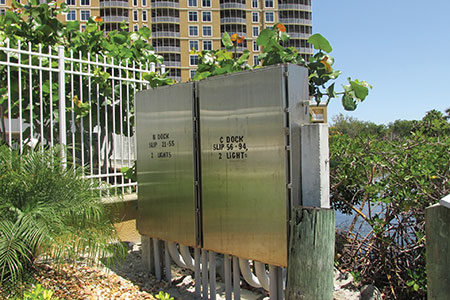
These GFP requirements were added to Article 555 for the 2011 NEC at what was at the time a new 555.3. At that time, this section was calling for ground-fault protection on the main overcurrent protective device servicing a marina or boatyard. This ground-fault protection was to have a maximum 100 milliamperes (mA) capacity. In lieu of this ground-fault protection on the main, individual GFCI protection on each branch circuit or feeder was permitted. Confusion existed with this provision before the ink dried on the 2011 NEC as this new requirement was aimed at “protection for personnel,” not ground-fault protection (GFP) for equipment, yet the title and the Code language referenced “ground-fault protection,” which is for equipment.
This added GFP requirement was proposed as a result of numerous fatalities occurring in and around marinas due to human contact with stray currents in contact with the water at these wet environments. Part of the substantiation noted several deaths as a result of drowning where the victims lost function of their limbs and the ability to react or swim. This 2011 NEC 100 mA GFP protection supplying a main service or feeder most assuredly provided some degree of protection; however, there would seem to be issues that still needed to be addressed if the concern was with protection of personnel.
A Class A GFCI is intended to minimize electric shock hazards for the protection of people. This GFCI is a protective device that will open a circuit within a current range of 4–6 mA as required by UL 943, Ground-Fault Circuit-Interrupters. It will function to de-energize a circuit or portion of a circuit within an established period of time, where a current to ground exceeds a predetermined trip value of 4–6 mA. This 4–6 mA value is considered the “let-go threshold” for humans. Any GFCI device with a predetermined trip value of greater than 4–6 mA is not providing true GFCI protection for personnel.
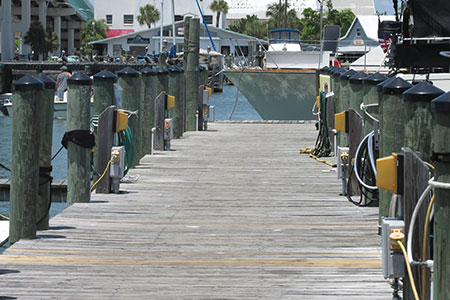
For the 2017 NEC, this maximum 100 mA capacity has been reduced to a maximum of 30 mA. This 30 mA ground-fault limit is consistent with that recommended in a report entitled “Assessment of Hazardous Voltage/Current in Marinas, Boatyards and Floating Buildings” that was commissioned by NFPA’s Fire Protection Research Foundation. This report by the American Boat and Yacht Council (ABYC) Foundation, Inc., stated in part:
“ABYC Standards recommend a device that interrupts the source of power feeding a fault within 100 milliseconds from the moment stray current exceeds 30 mA. While 30 mA through the body is more than enough to kill a swimmer (above the “let-go” threshold established for a Class A GFCI device), it is not sufficient to assume that all of the 30 mA leaking into the water will actually go through the swimmer. Rather, U. S. Coast Guard studies have shown that due to hemispherical “spreading” of the electric field, only a portion of the leakage current will go through the swimmer. The main exception to this occurs when the swimmer comes into direct contact with the voltage source itself, for example by grabbing a metallic ladder that has become energized. 30 mA represents an acceptable level that ABYC expects to prevent a majority of electric shock drowning (ESD) incidents while remaining practical enough to minimize unnecessary tripping.”
The substantiation for this reduction to 30 mA went further to state, “It should also be noted that ABYC standards, since December 31, 2012, have required 30 mA equipment leakage circuit interrupters (ELCI) on water crafts. While boats are not subject to NEC requirements, boats are connected to electrical branch circuits that are.”
Some users of the Code will argue that true protection for personnel (people) can only be achieved with Class A GFCI protection (maximum 4 to 6 mA current levels). This below the “let-go” level of protection would prove to be severely too sensitive for the wet environments encountered at marinas and docking facilities resulting in continual nuisance tripping. The substantiation and reasoning for the 30 mA values make logical sense and have merit. For the marina industry, as well as the electrical industry, only time will tell if this 30 mA value has validity. Let’s hope the theories are correct. Who wants to be the first to jump in the water at your local marina and find out?
Required Signage at Marinas and Boatyards
It should be noted that a related change occurred at 555.24 that calls for permanent safety signs to be installed to give notice of electrical shock hazard risks to persons using or swimming near a boat dock or marina. The signage must comply with 110.21(B)(1) for field-applied hazard markings (effective words and/or colors and/or symbols, permanently affixed, sufficient durability to withstand the environment involved, etc.) and be clearly visible from all approaches to a marina or boatyard facility. The signs shall state “WARNING — POTENTIAL SHOCK HAZARD — ELECTRICAL CURRENTS MAY BE PRESENT IN THE WATER.”
Due in part to stray circulating currents in the water, swimming at marinas and boatyards presents a significant danger of electric shock drowning (ESD) to people engaging in such aquatic activities. Eliminating recreational swimming in the immediate vicinity of boats and docks using alternating current (ac) electrical power will help protect the public against the dangers associated with stray currents associated with electrical consumption at marinas and boatyards.

To that end, the new requirements of 555.24 were added to the 2017 NEC. This new section will require posting of signage to alert personnel coming into the vicinity of marinas and boatyards of the potential for shock hazards in the water in and around these nautical areas. Numerous electric shock drowning deaths and injuries (including electrocution in the water) at marinas and boatyards have been documented and investigated over the last decade. In all cases, these accidents would have been prevented if the victims had not swum in the water around boats and docks using ac electrical power. The warnings provided by signage, along with enforcement by marina and boatyard operators will save lives and prevent injuries to the public.
In the same NFPA report mentioned earlier, entitled, “Assessment of Hazardous Voltage/Current in Marinas, Boatyard and Floating Buildings,” the following was noted: “The American Boat and Yacht Council (ABYC) recommends that no recreational swimming at any time take place in a marina environment. Part of an effective plan against ESD will include a no swimming policy and ‘NO SWIMMING’ signs posted throughout the facility. This policy will also prevent possible injury due to boat traffic, harmful marine life, etc.”
It is recognized that inspection and regular maintenance activities will still be required in these marinas and boatyards. Actions such as disconnecting shore connections to boats at and near the work location, securing power to docks or sections of docks, and wearing protective equipment (such as wet suits) can be used to provide adequate protection for maintenance personnel. The general public does not have an understanding of the potential electrical dangers present within the confines of marinas and boatyards. Marina and boatyard operators clearly have a responsibility to provide protection from electrical hazards as is stated in NFPA 303, Fire Protection Standard for Marinas and Boatyards.
Conclusion
The potential for electrical shock hazards in the water in and around the vicinity of marinas and boatyards increases the closer one gets to these docking facilities. When an electrical ground fault condition occurs in wiring or equipment in and around a marina or boatyard, the water around the docking facilities can become electrified. It could be a small amount of electricity that causes a tingling sensation, or enough to cause paralysis resulting in drowning, or even immediate cardiac arrest. Intentionally entering the water in the vicinity of the marinas and boatyards equipped with electrical wiring and equipment is a very dangerous situation that can result in a fatality.
Codes and standards such as the changes to Article 555 that were detailed in this article are designed to provide an acceptable margin of safety enhancement and should be viewed as protection for those who accidentally enter the water, and not as a “green light” for recreational swimming activities in and around marinas and boatyards.





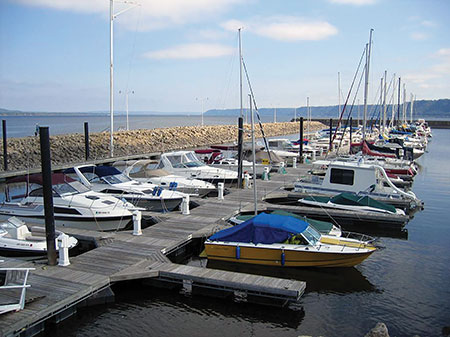






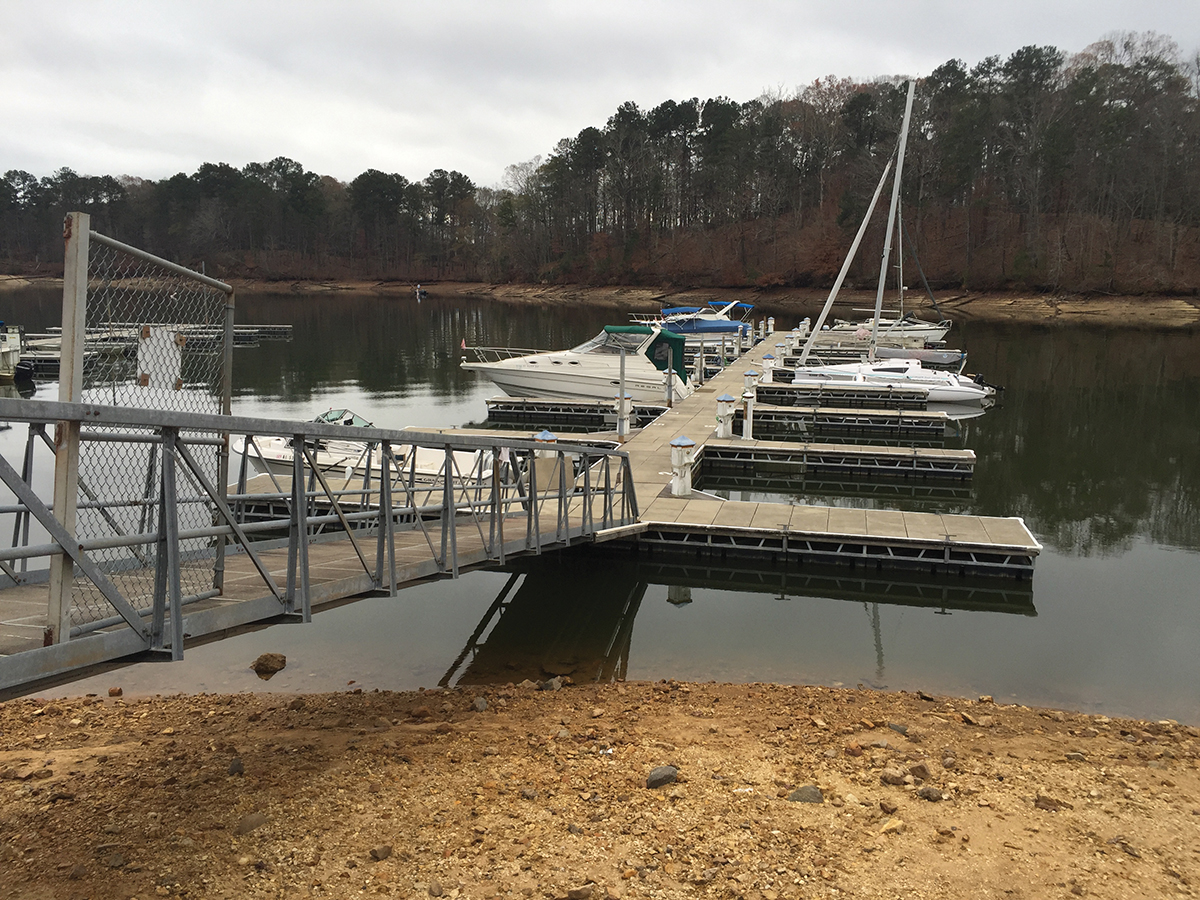


Find Us on Socials